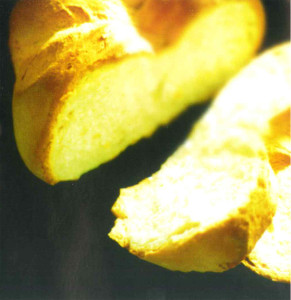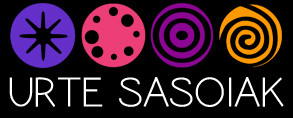 The night of Christmas Eve and Christmas supper are perhaps the highlights of Christmas season rituals.
The night of Christmas Eve and Christmas supper are perhaps the highlights of Christmas season rituals.
Christmas Eve supper has traditionally been the focus of the day in most places of Southern Euskal Herria. On the contrary, the different historical and sociological background of the French Basque Country has not favoured the observance of Christmas Eve traditions there. In those areas where a special dinner was celebrated on the Eve of Nativity, strict fast was observed during the day as prescribed by the Church, and red meat was normally not consumed even for supper. The meal usually consisted on cabbage seasoned with oil (in Nafarroa they had cardoon instead of cabbage, and more recently cauliflower is being widely used in the whole of the territory for the occasion) or perhaps some salt fish soup called zurruputuna as first course; the second course would consist of red sea bream or salt fish; and as dessert either compote (often cooked in wine), intxaur-saltsa, literally walnut sauce, or ahia, a milk and flour type of custard. Seasonal dry fruits such as chestnuts, walnuts and hazelnuts would commonly be part of the menu.
Instead of fish or as well as it, the custom of eating snails on Christmas Eve is well-known, and was permitted by the fasting prescriptions of the Church. These days though meat and many other types of dishes and desserts have been added to the diet.
During other Christmas family reunions (Christmas Day lunchtime meal, New Year’s Eve supper, New Year’s lunch, Three Wise Men Day…) the custom of preparing out of the ordinary meals is still firmly ingrained in Southern Euskal Herria.
Apart from the special supper, there are other customs specific to the Eve of Nativity. The ogi salutadore ritual, for instance, is by all means worthy of mention. It is a tradition that has only been maintained in certain areas of Bizkaia. At Christmas Eve supper either the head of the house or the person seated at the head of the table takes the bread, makes the sign of the cross on it, kisses it and cuts a piece with a knife. The sliced portion of bread is kept under the table cloth until supper is over and saved inside a case in a cupboard or another chosen place. It is said that the crust of bread does not spoil, and that it has a magical powers of protection against lightning, hailstorms, rabid dogs, and so on. The piece of bread is replaced by a fresh piece year after year.
The burning of the Yule log was another ritual practiced in many homes throughout the Basque territory. A very large log was specially kept for the night of Christmas Eve. The log would have been carefully chosen in the woods during the autumn and dragged home with the help of oxen. It was burned on the hearth as part of Christmas Eve night celebrations. The remains and ashes of the log were thought to have magical properties and would be used to protect the inhabitants of the house and the domestic animals. There are a considerable number of variants or ways to refer to the Christmas log in Basque: Olentzero-enborra, Onontzaro-enborra, Gabon-subila, Gabon-mukurra, Suklaro-egurra…



